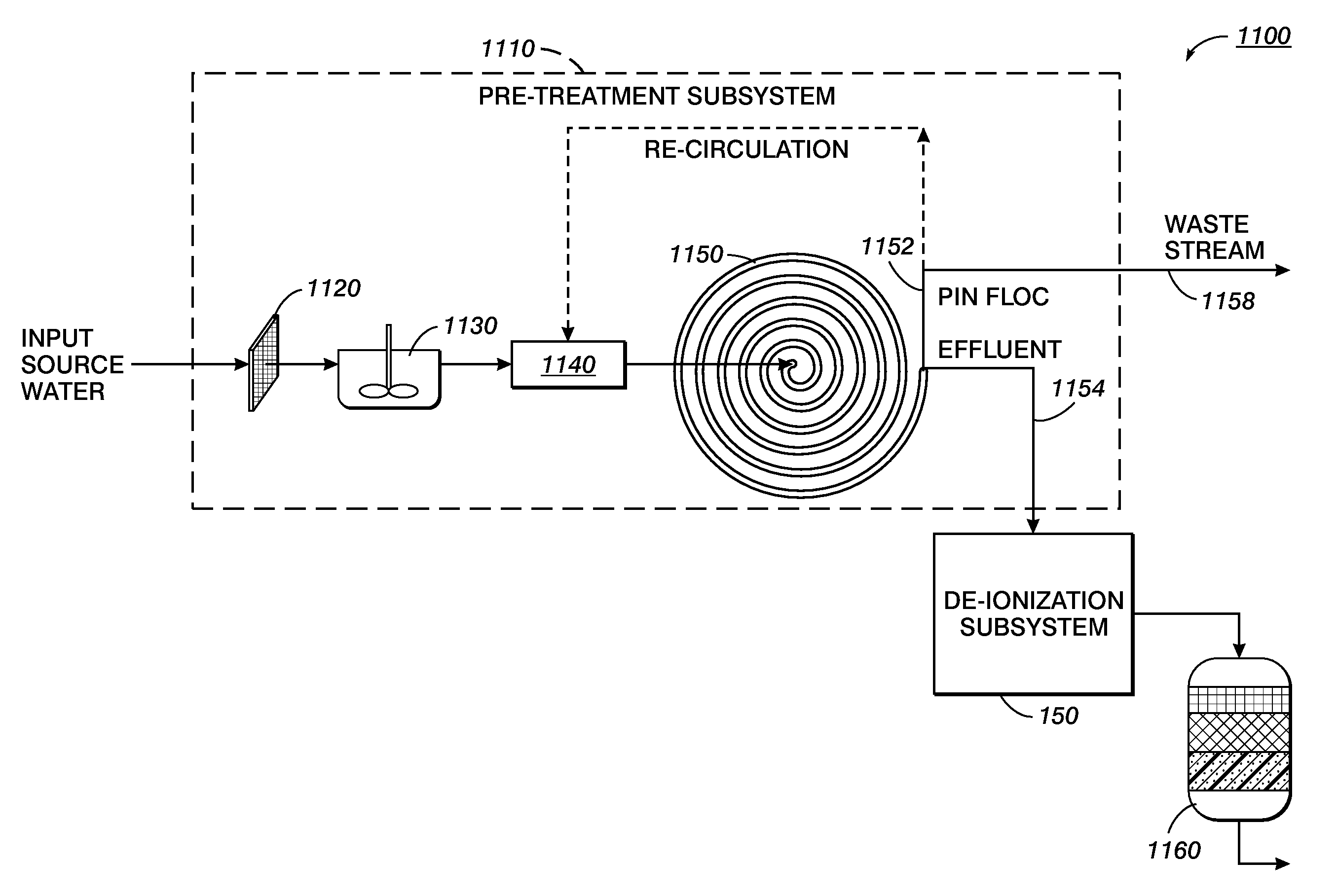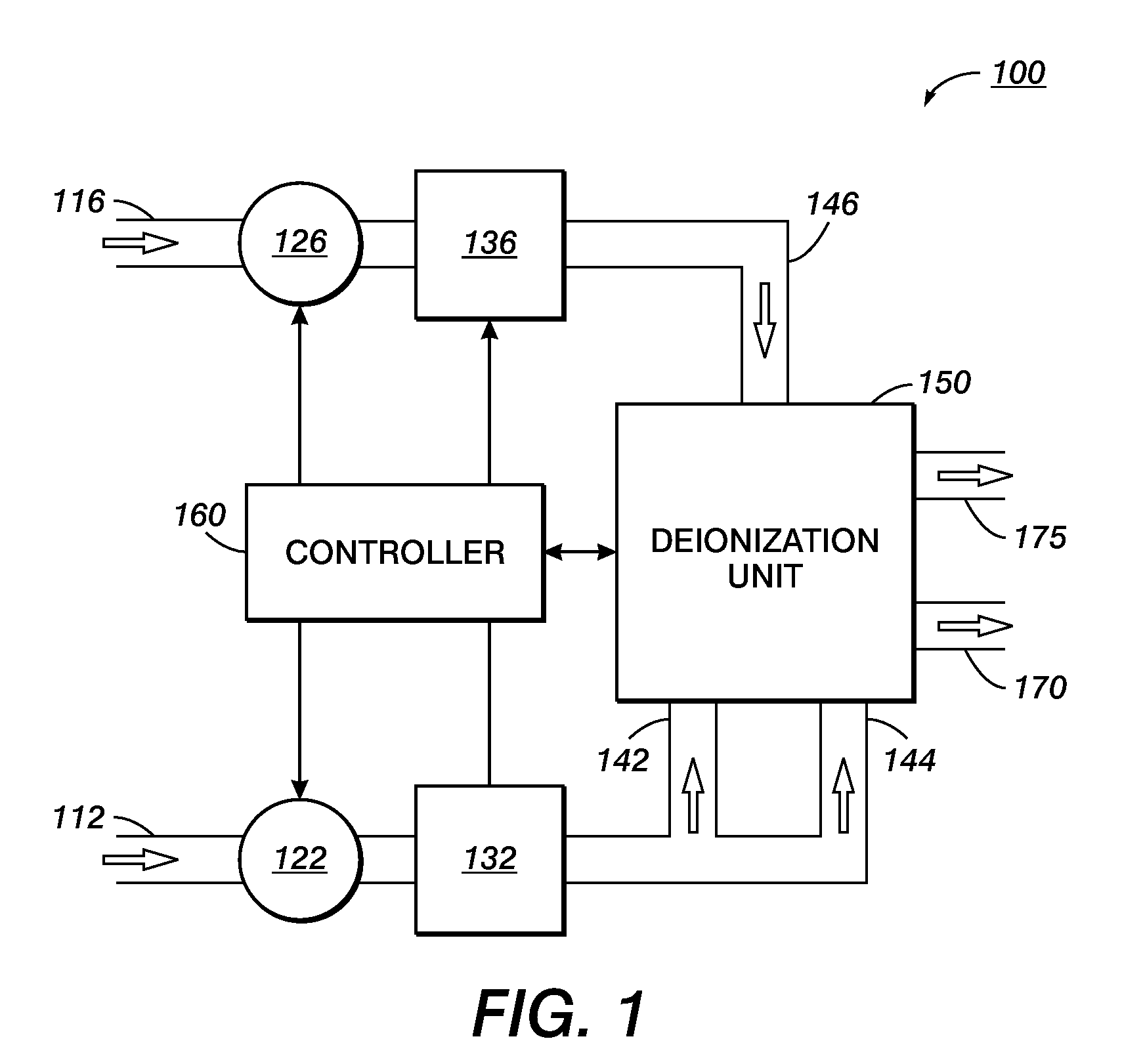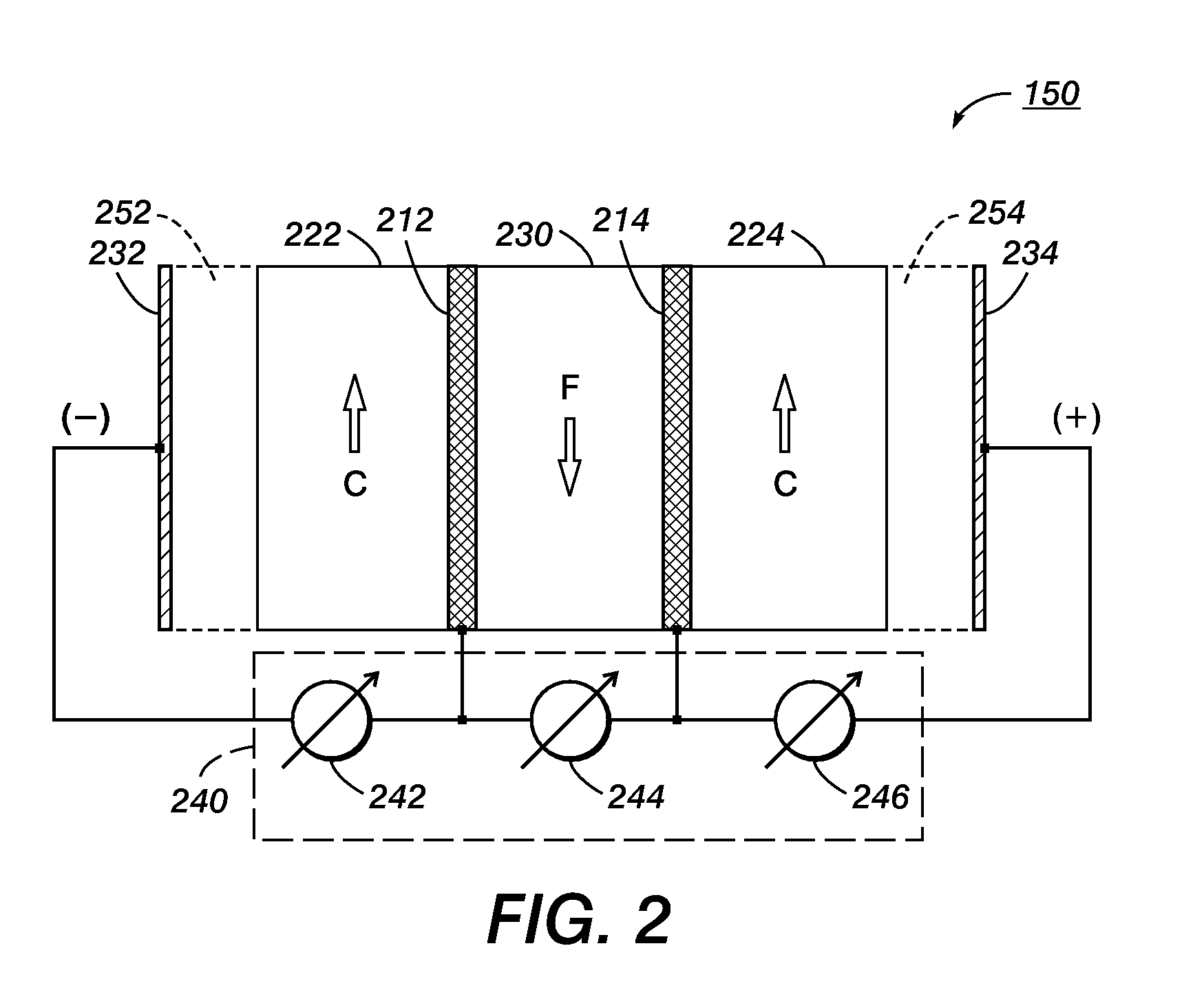Flow de-ionization using independently controlled voltages
a technology of independent control and flow deionization, which is applied in the direction of fluid pressure measurement, liquid/fluent solid measurement, peptide measurement, etc., can solve the problems of energy inefficiency, voltage drop across feed and waste channel, and the need to remove all or selected species of ions from liquids
- Summary
- Abstract
- Description
- Claims
- Application Information
AI Technical Summary
Problems solved by technology
Method used
Image
Examples
Embodiment Construction
[0020]One disclosed feature of the embodiments is a technique to provide continuous de-ionization. First and second conductive porous membranes are placed between a feed channel having a feed flow and first and second concentration channels having first and second concentration flows to separate the feed channel from the concentration channels. Cathode and anode electrodes are placed on external sides of the concentration channels. A voltage supply distribution network provides independent voltages across the channels, e.g., between the anode, the two conductive porous membranes and the cathode, to cause movement of ions in the feed and concentration flows toward the electrodes. The advantages of this approach include the ability to optimize the voltage drop across each channel independently based on their electrical parameters such as ion conductivity, etc.
[0021]In another embodiment, the electrodes and membranes are split into independent units along the flow channels. This segmen...
PUM
| Property | Measurement | Unit |
|---|---|---|
| sizes | aaaaa | aaaaa |
| concentration | aaaaa | aaaaa |
| voltage supply distribution | aaaaa | aaaaa |
Abstract
Description
Claims
Application Information
 Login to View More
Login to View More - R&D
- Intellectual Property
- Life Sciences
- Materials
- Tech Scout
- Unparalleled Data Quality
- Higher Quality Content
- 60% Fewer Hallucinations
Browse by: Latest US Patents, China's latest patents, Technical Efficacy Thesaurus, Application Domain, Technology Topic, Popular Technical Reports.
© 2025 PatSnap. All rights reserved.Legal|Privacy policy|Modern Slavery Act Transparency Statement|Sitemap|About US| Contact US: help@patsnap.com



